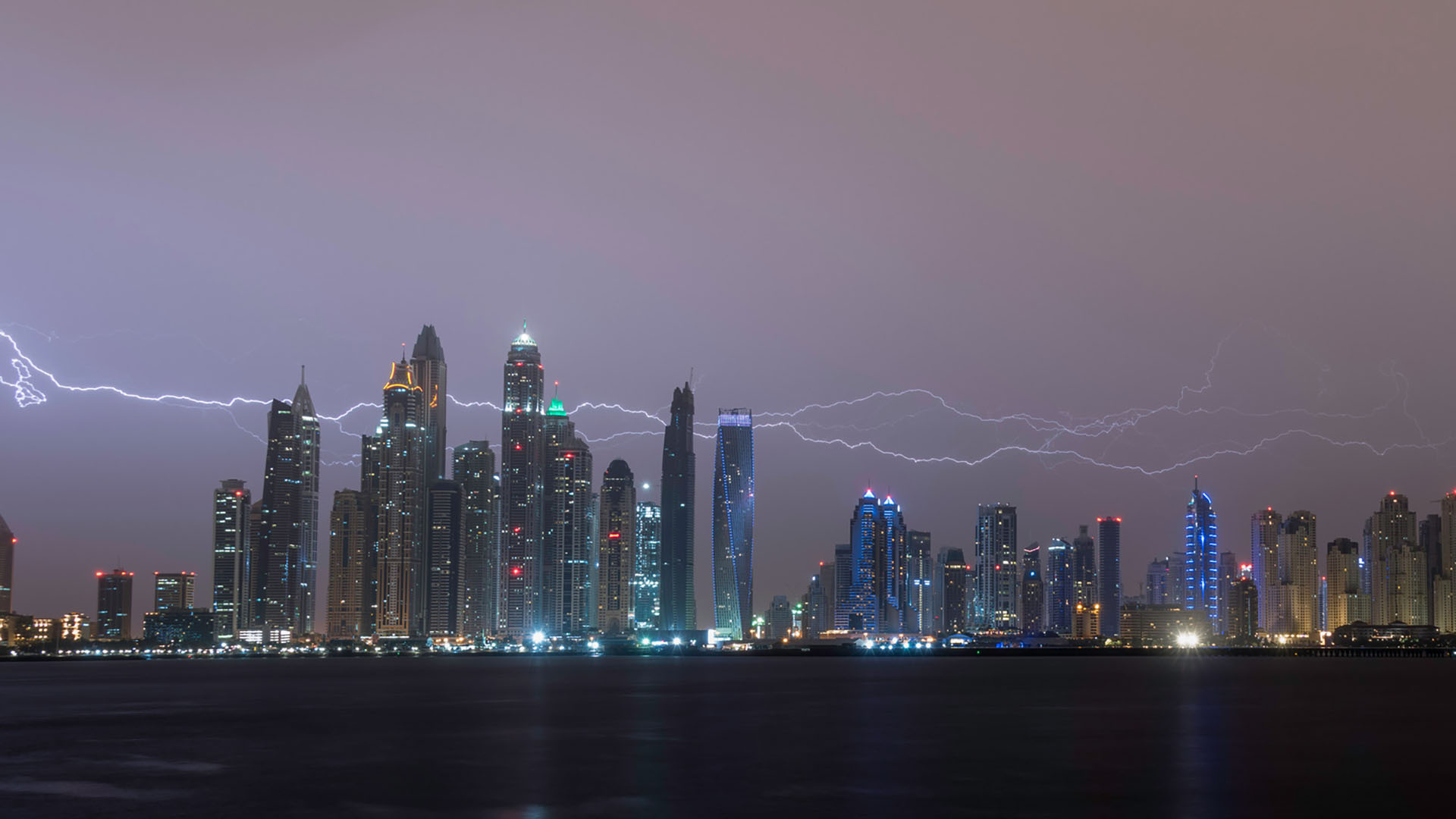Dubai was recently hit by a meteorological episode of rare magnitude, with exceptional rainfall – to the point of causing flooding. One hypothesis suggested that the severe thunderstorm that hit the emirate was due to cloud seeding gone wrong. However, this is unlikely.
A few years ago, I found myself climbing the narrow steps of a Learjet plane onto the sweltering runway of a deserted airport near the South Africa-Mozambique border. The humidity was palpable and the air thick.
Advertisement
Weather radar indicated a rapidly developing storm cloud. Our mission was to cross the most active part of the storm, measure it, cross it again while dumping a bin of dry ice, then turn around and cross it a second time for a final measurement.
The interior of the plane looked like a blender because the turbulence was so strong. Thousands of feet below, a smaller plane snaked through the storm's downdrafts to measure how much rain was falling. It's not something you do every day, but the gigantic hail dents on the Learjet's wings were a testament to its past missions.
Other than remembering the pleasure of flying through a storm in a Learjet, I haven't thought much about this project. Until I heard about the exceptional storm that recently hit Dubai.
The project in which I participated had the pretty name of RAIN – for rain increase in Nelspruit – was a cloud seeding experiment conducted for several years. Cloud seeding involves adding tiny particles to a cloud to give the moisture something to bind to to form droplets. Gradually, these droplets merge and become heavy enough to fall as rain. In theory, “seeded” clouds will produce more droplets that can fall as rain.
Advertisement
No flight has been able to prove the effectiveness of seeding. It's impossible. There is no perfectly identical cloud to compare the seeding result of a previous cloud to. It is therefore necessary to carry out a large number of missions and measure without seeding on half of them. Enough to create a set of data for the experiment itself (seeded clouds) and its control (unseeded clouds).
The statistical analysis of the RAIN results was rigorous to say the least. After several years of testing, the precipitation rates of some storms have been modifiedalthough it has never been possible to prove that a single storm had actually been modified.

The ingredients for the perfect storm
Early on the morning of April 16, our chat group of former classmates who have been scattered around the world for 40 years began reporting unprecedented rains. This information came from Brendan, based in Bahrain, and Ant, in Dubai. Ant is a pilot and was leaving Dubai that morning. He sent us photos of his flight over the saturated desert.
Parts of the Arabian Peninsula received 18 months of precipitation in 24 hours that day. The airport looked like more like a port. Inasmuch as meteorologist from the focus group, I looked at satellite data and data from forecast models. And what I saw were the makings of a perfect storm.
What normally keeps ancient deserts, such as those of the Arabian Peninsula, so dry is the persistent, intense descent of air – just the opposite of what is needed for rain. The descending air is very dry, because it comes from the upper, cold part of the atmosphere. It is compressed and heated as it descends, and arrives close to the surface like in a hair dryer.


Beneath this layer of air, especially in deserts near warm oceans, evaporation is abundant, but this moisture is held captive by descending air arriving from above. In other words, it is a cauldron with the lid firmly in place.
On April 16, the lid of the pot was lifted by a high-altitude jet stream unusually far from the South. In fact, two jet streams, the subtropical jet and the polar jet, joined forces and interrupted the circulation of cooler imported air. The descending air – and the cauldron lid along with it – were gone.
Meanwhile, a flow of moisture-laden air accelerated from the northern tropical Indian Ocean and converged on the desert. Dew point temperatures over the UAE were then similar to those normally found in the rainforests of the Congo Basin.
Under these conditions, the thunderstorms develop very quickly and, in this case, a particular type of storm, a mesoscale convective system, was formed and maintained for many hours. Infrared satellite data showed that it was comparable in size to France.


Cloud seeding not to blame in Dubai
The power, intensity and buildup of such a storm are difficult to understand. What surprised me, however, was not the majesty of nature, but the emergence of analyzes that attributed heavy rains to cloud seeding. A popular British newspaper even insinuated that the University of Reading, a hotbed of meteorological expertise, was responsible for these bad weather.
It turns out that the United Arab Emirates has been carrying out a cloud seeding project for several years, called in English “UAE Research Program for Rain Enhancement Science”. Their approach involves firing rockets containing hygroscopic (water-attracting) salts from planes into hot cumuliform (cumulus-shaped) clouds. The idea, similar to the RAIN project I worked on, is to encourage the growth of cloud droplets and therefore precipitation. Large droplets fall more easily.
So could seeding have created a massive storm system the size of France? Let's be clear, it would be like a breeze stopping a speeding intercity train. Above all, no seeding theft was not planned That day. The large, thick clouds that formed on April 16 were not the target of the experiment.
What is interesting, however, is that humans still have difficulty accepting the fact that 2.4 trillion tonnes of carbon (the total of our emissions since the pre-industrial era) could have an impact on the climate. And at the same time, they can so easily accept the idea that a few shots of hygroscopic salt can cause the equivalent of 18 months of rain to fall in one day.


Richard WashingtonProfessor of Climate Science, University of Oxford
This article is republished from The Conversation under Creative Commons license. Read theoriginal article.
